Charles E W Bean, Diaries, AWM38 3DRL 606/275/1 - 1918 - 1938 - Part 22
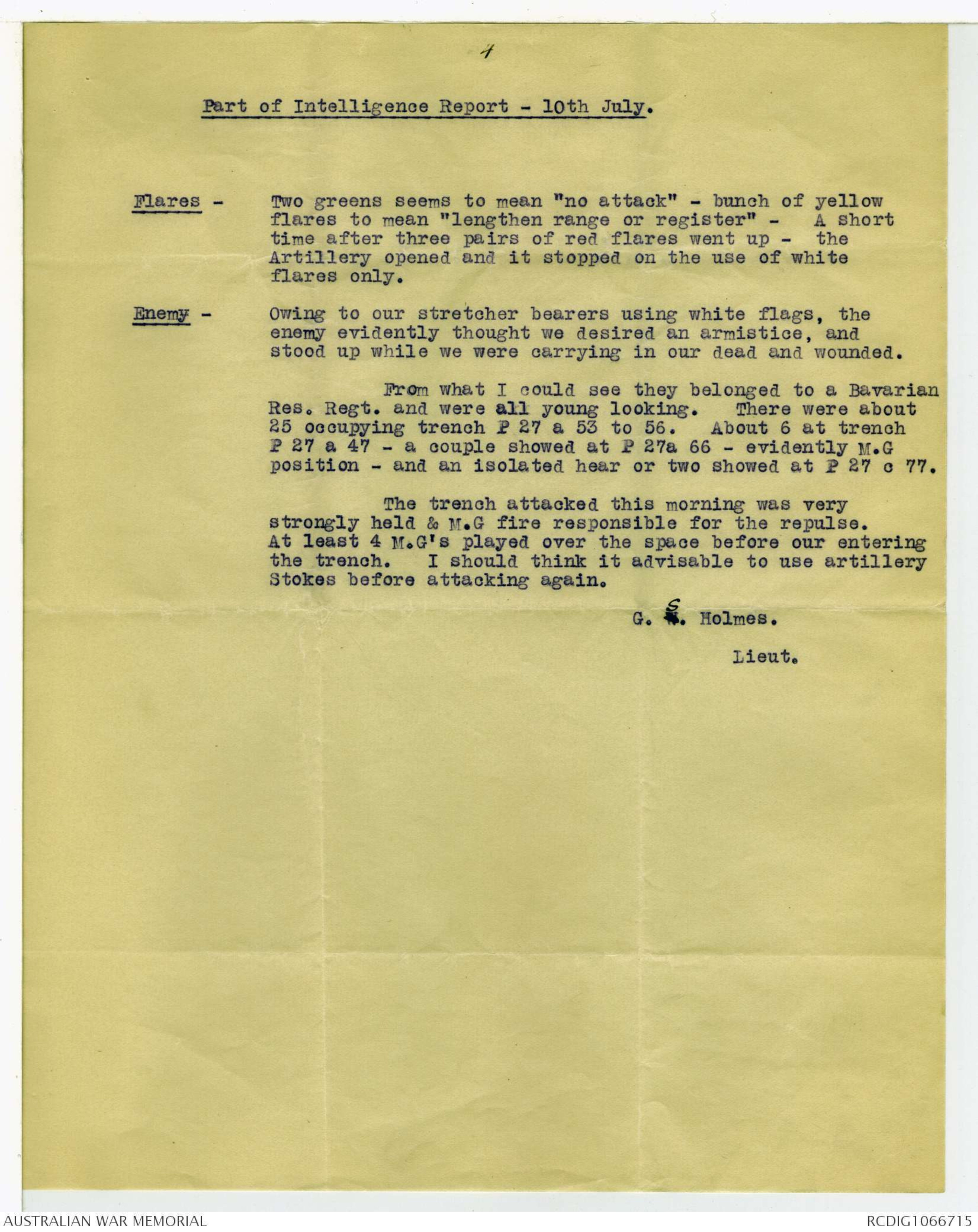
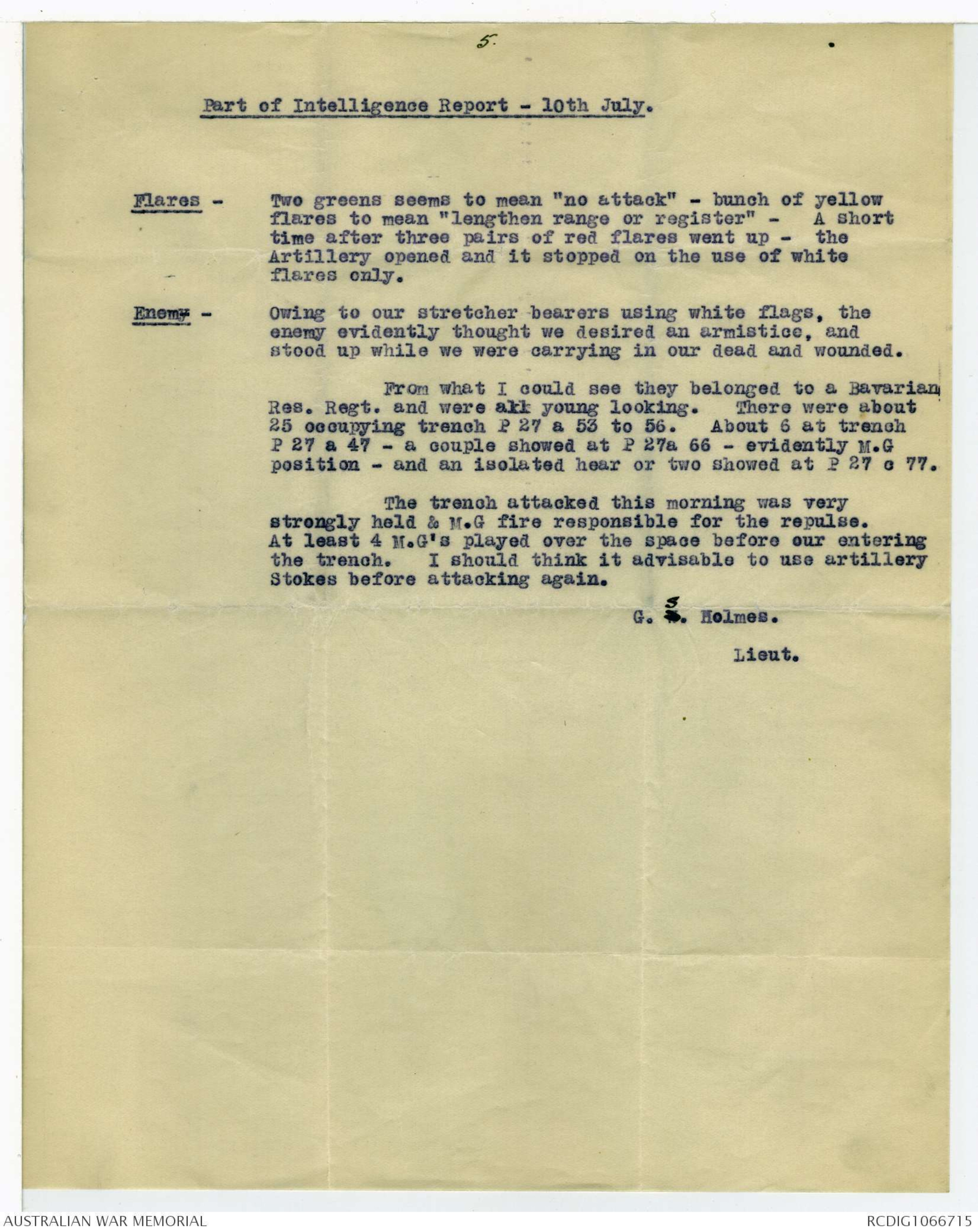
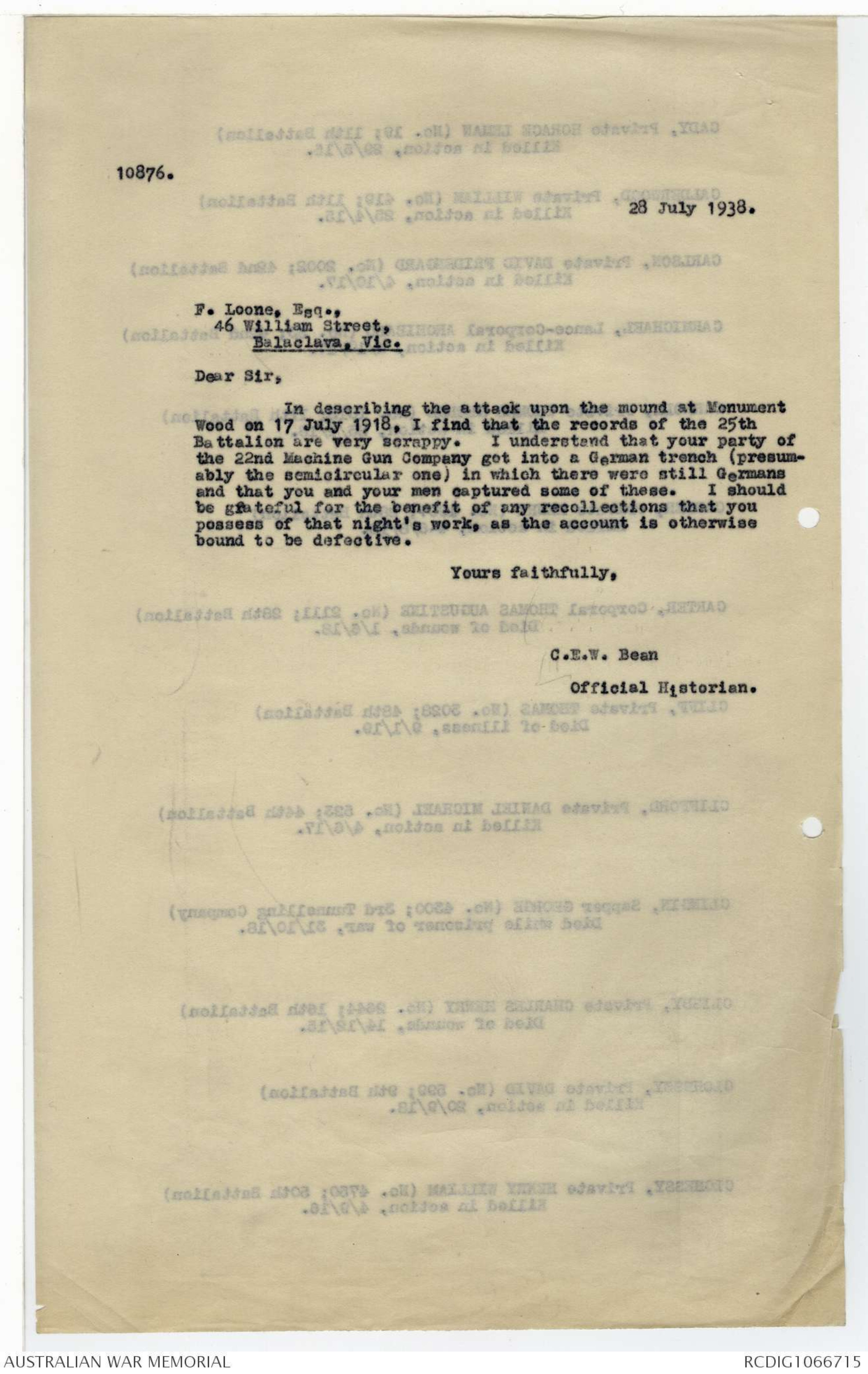
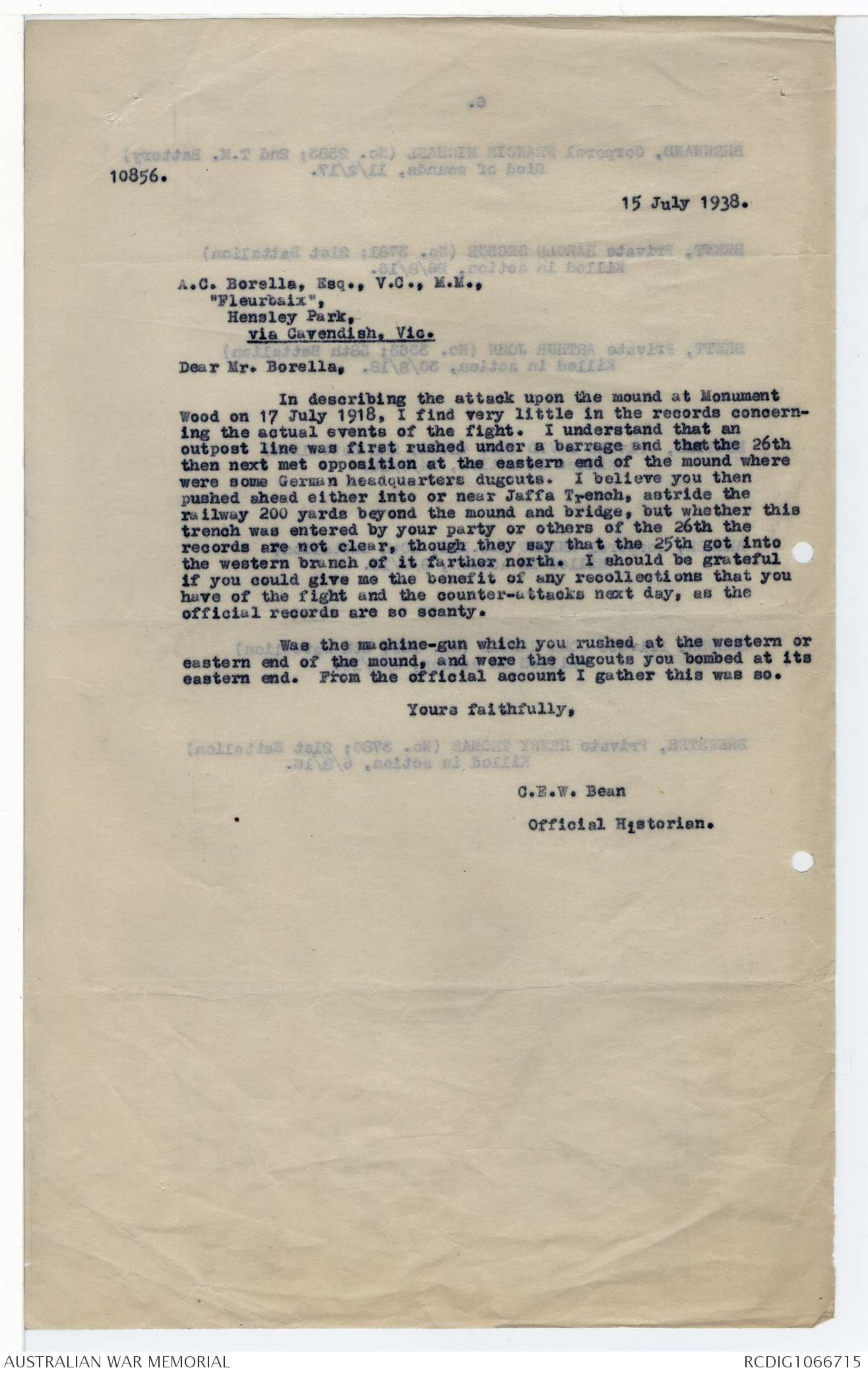

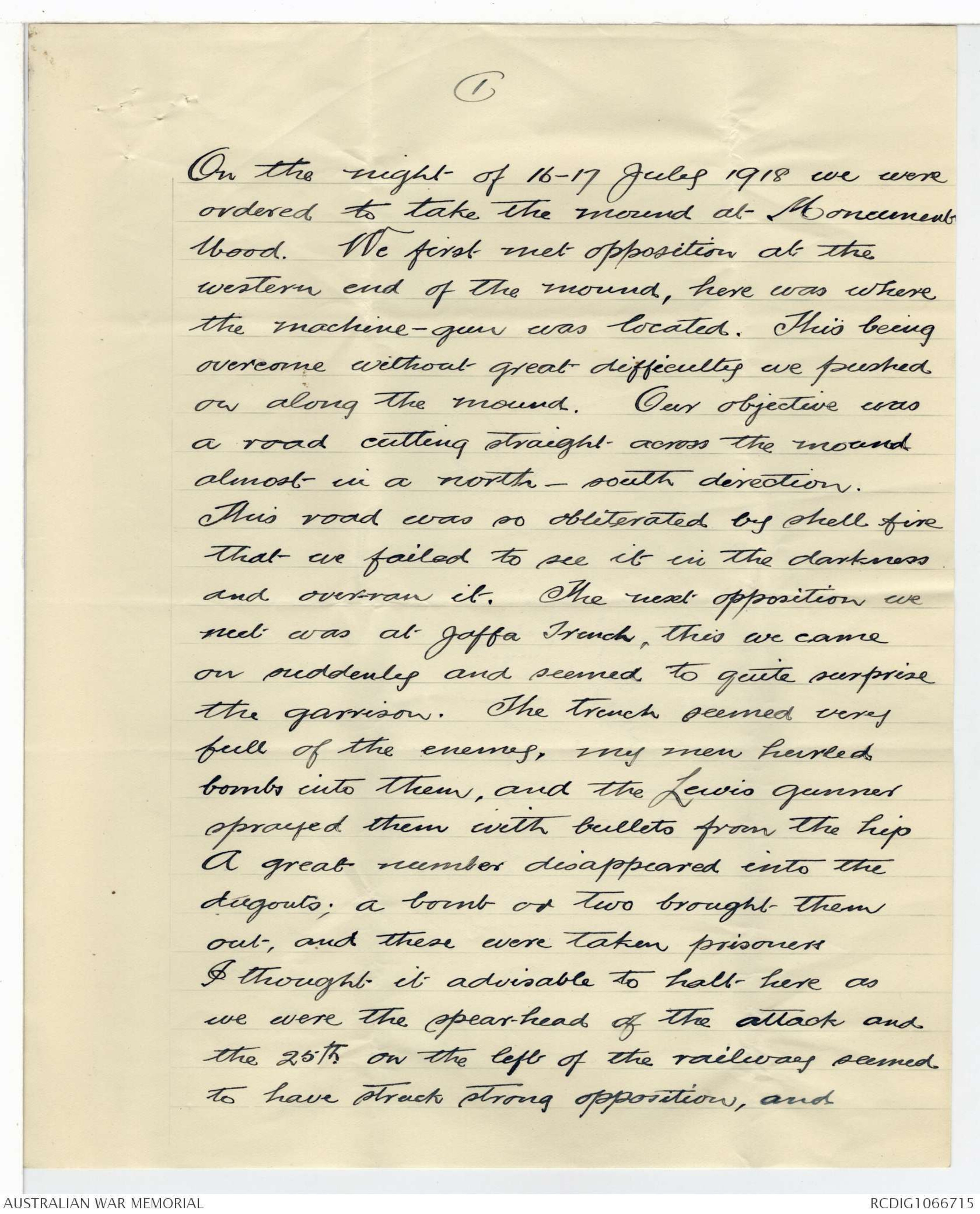

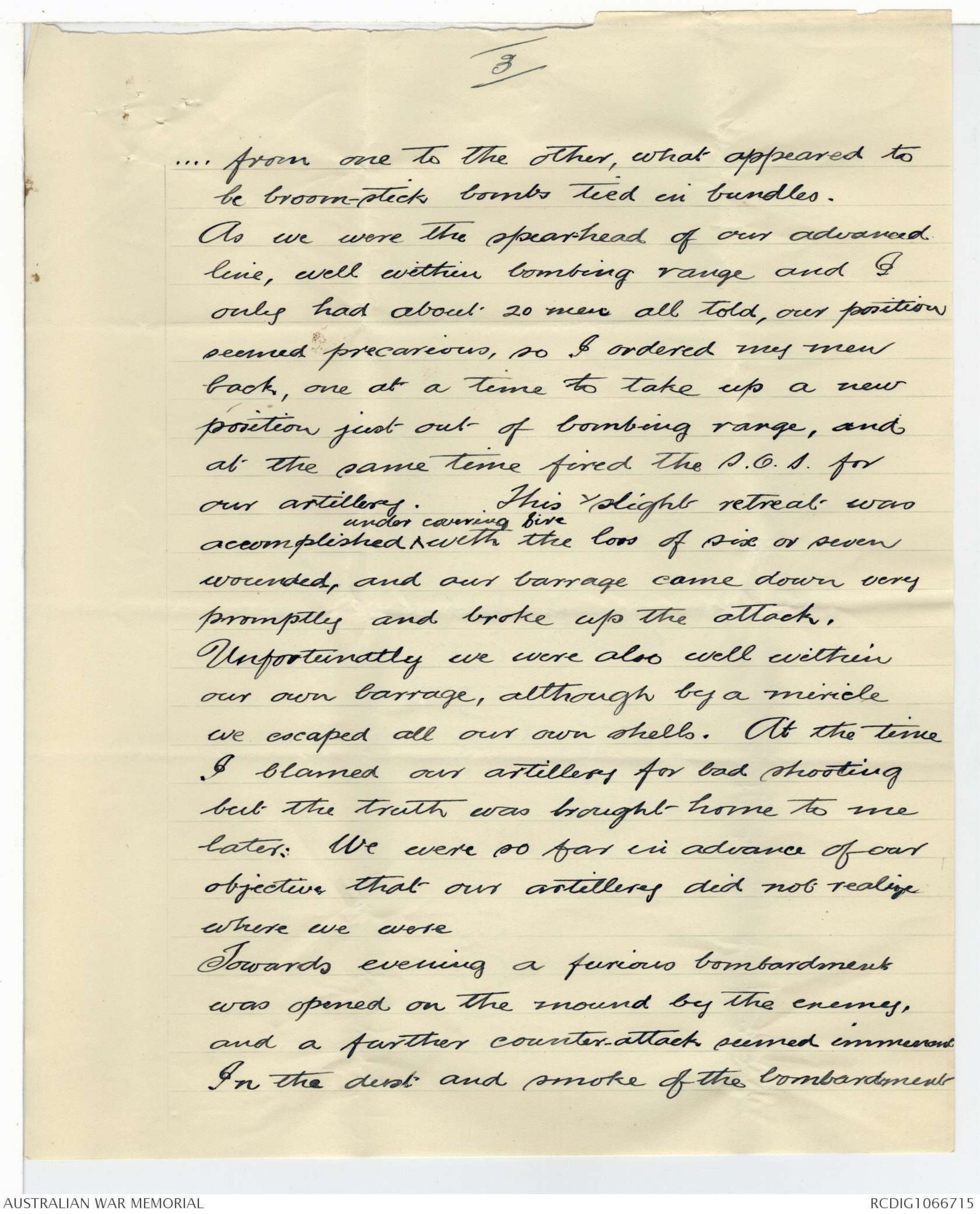
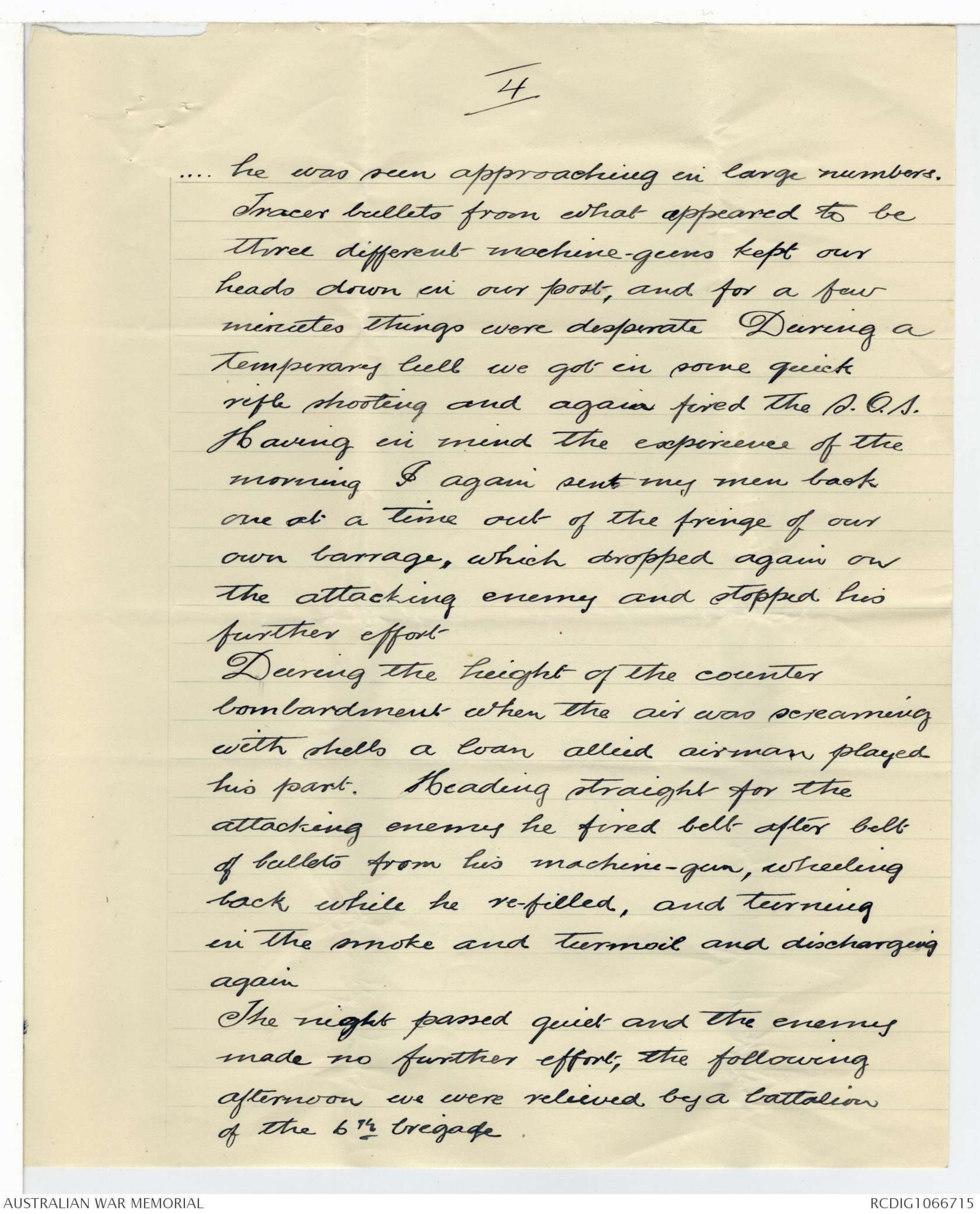
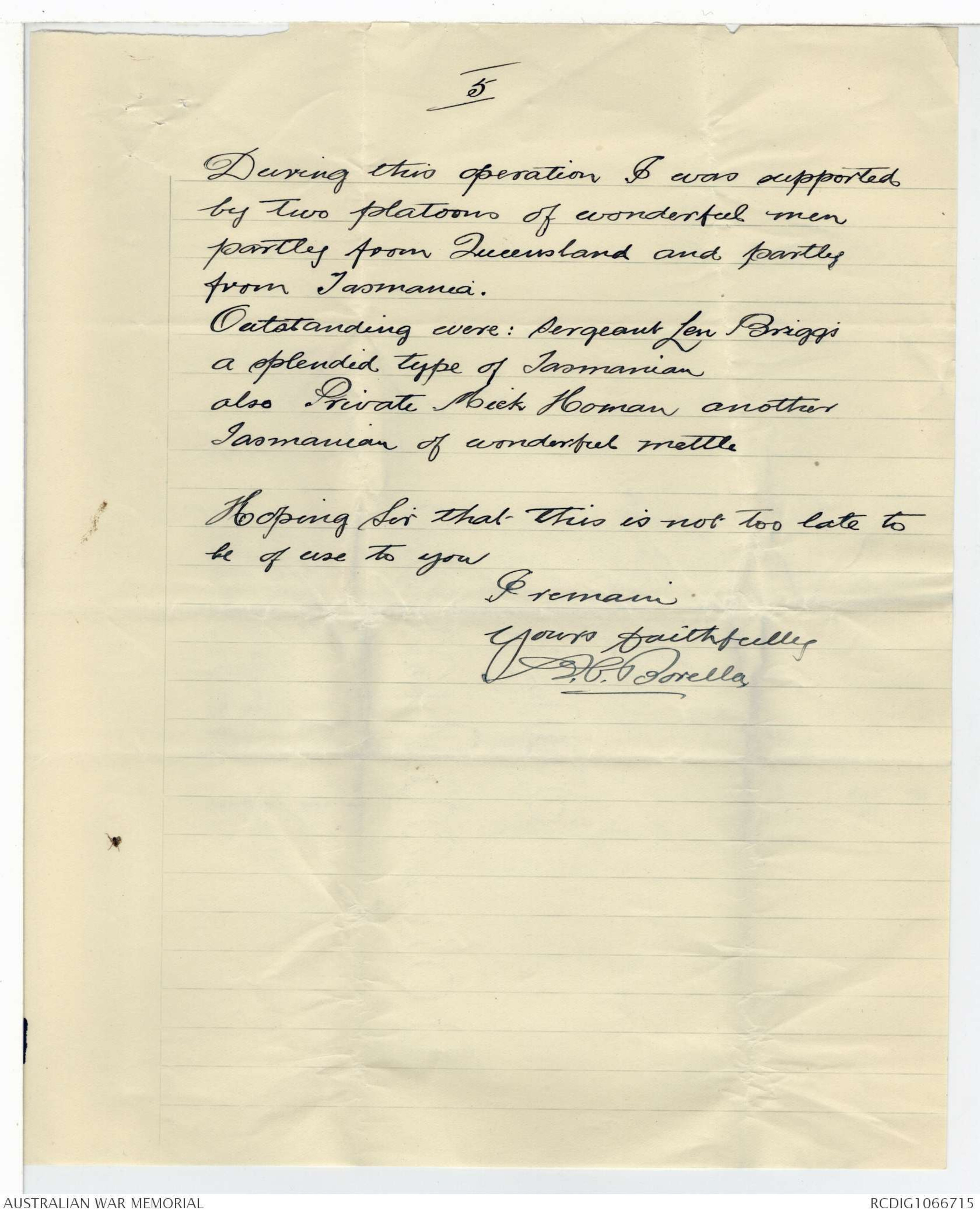
Part of Intelligence Report - 10th July.
Flares - The greens seems to mean "no attack" - bunch of yellow
flares to mean "lengthen range or register" - A short
time after three pairs of red flares went up - the
Artillery opened and it stopped on the use of white
flares only.
Enemy - Owing to our stretcher bearers using white flags, the
enemy evidently thought we desired an armistice, and
stood up while we were carrying in our dead and wounded.
From what I could see they belonged to a Bavarian
Res. Regt. and were all young looking. There were about
25 occupying trench P27 a 53 to 56. About 6 at trench
P 27 a 47 - a couple showed at P27a 66 - evidently M.G.
position - and an isolated hear or two shoed at P27 c 77.
The trench attacked this morning was very
strongly held & M.G. fire responsible for the repulse.
At least 4 M.G's played over the space before our entering
the trench. I should think it advisable to use artillery
Stokes before attacking again.
G. S. Holmes
Lieut.
Part of Intelligence Report - 10th July.
Flares - The greens seems to mean "no attack" - bunch of yellow
flares to mean "lengthen range or register" - A short
time after three pairs of red flares went up - the
Artillery opened and it stopped on the use of white
flares only.
Enemy - Owing to our stretcher bearers using white flags, the
enemy evidently thought we desired an armistice, and
stood up while we were carrying in our dead and wounded.
From what I could see they belonged to a Bavarian
Res. Regt. and were all young looking. There were about
25 occupying trench P27 a 53 to 56. About 6 at trench
P 27 a 47 - a couple showed at P27a 66 - evidently M.G.
position - and an isolated hear or two shoed at P27 c 77.
The trench attacked this morning was very
strongly held & M.G. fire responsible for the repulse.
At least 4 M.G's played over the space before our entering
the trench. I should think it advisable to use artillery
Stokes before attacking again.
G. S. Holmes
Lieut.
10876.
28 July 1938.
F. Loone, Esq.s
46 William Street,
Balaclava. Vic.
Dear Sir,
In describing the attack upon the mound at Monument
Wood on 17 July 1918, I find that the records of the 25th
Battalion are very scrappy. I understand that your party of
the 22nd Machine Gun Company got into a German trench (presum-
ably the semicircular one) in which there were still Germans
and that you and your men captured some of these. I should
be grateful for the benefit of any recollections that you
possess of that night's work, as the account is otherwise
bound to be defective.
Yours faithfully,
C.E.W. Bean
Official Historian.
10856.
15 July 1938.
A.C. Borella, Esq., V.C., M.M.,
"Fleurbaix",
Hensley Park,
via Cavendish, Vic.
Dear Mr. Borella,
In describing the attack upon the mound at Monument
wood on 17 July 1918, I find very little in the records concern-
ing the actual events of the fight. I understand that an
outpost line was first rushed under a barrage and that the 26th
then next met opposition at the eastern end of the mound where
were some German headquarters dugouts. I believe you then
pushed ahead either into or near Jaffa Trench, astride the
railway 200 yards beyond the mound and bridge, but whether this
trench was entered by your party or others of the 26th the
records are not clear, though they say that the 25th got into
the western branch of it further north. I should be grateful
if you could give me the benefit of any recollections that you
have of the fight and the counter-attacks next day, as the
official records are so scanty.
Was the machine-un which you rushed at the western or
eastern end of the mound, and were the dugouts you bombed at its
eastern end. From the official account I gather this was so.
Yours faithfully,
C.E.W. Bean
Official Historian.
H.N. From Mr Borella.
The Mound 17/18 July 1918
"Fleurbaix"
Hensley Park
via Cavendish
Vic.
11/8/38
Captain C.E.W. Bean
Official Historian
Victoria Barracks
Paddington
Dear Sir
I am indeed sorry that
I have been unable to furnish you with
the following particulars at an earlier date,
but I have hunted through my war relics
for a report of that particular operation
written on the spot, and have failed to
find it. Doubtless it would have given
you a clearer and more accurate account
than I am able to give you at the present
day. Memory often becomes dulled
and is liable to play uncertain tricks
after a lapse of so many years.
(1)
On the night of 16-17 July 1918 we were
ordered to take the mound at Monument
Wood. We first met opposition at the
western end of the mound, here was where
the machine-gun was located. This being
overcome without great difficulty we pushed
on along the mound. Our objective was
a road cutting straight cross the mound
almost in a north-south direction.
This road was so obliterated by shell fire
that we failed to see it in the darkness
and overran it. The most opposition we
met was at Jaffa Trench. This we came
on suddenly and seemed to quite surprise
the garrison. The Trench seemed very
full of the enemy, my men hurled
bombs into them, and the Lewis gunner
sprayed them with bullets from the hip
A great number disappeared into the
dugouts; a bomb or two brought them
out, and then were taken prisoner
I thought it advisable to halt here as
we were the spear-head of the attack and
the 25th on the left of the railway seemed
to have struck strong opposition, and
2
.....heavy fighting was going on there-
they still seemed a good distance back
Almost immediately the prisoners emerged
from the two dugouts they burst into
flames, evidently the were set alight
to destroy certain papers or maps.
I now found it unwise to remain in
Jaffa Trench, the brilliant illumination
would have made easy targets of us for the
enemy, so I shifted my men farther
back along the mound (western direction)
and we took up our position in shell-holes
just out of the fire light
For the next hour or so the enemy
showed unusual lack of common sense,
numbers me up from their own side
and stood in the bright reflection of the
burning dugouts, and made wonderful
targets for our men
When dawn broke and it became light
enough to see, a strong counterattack was
being organized. What I estimated at
about two company's of the enemy were
passing a certain point and jumping into
Jaffa Trench. We could see them passing
3
....from one to the other, what appeared to
be broom-stick bombs tied in bundles.
As we were the spear-head of our advanced
line, well within bombing range and I
only had about 20 men all told, our position
seemed precarious, so I ordered my men
back, one at a time to take up a new
position just our of bombing range, and
at the same time fired the S.O.S. for
our artillery. This slight retreat was
accomplished ∧under covering fire with the loss of six or seven
wounded, and our barrage came down very
promptly and broke up the attack.
Unfortunatly we were also well within
our own barrage, although by a miracle
we escaped all our own shells. At the time
I slammed our artillery for bad shooting
but the truth was brought home to me
later: We were so far in advance of our
objective that our artillery did not realize
where we were
Towards evening a furious bombardment
was opened on the mound by the enemy,
and a further counterattack seemed immense
In the dust and smoke of the bombardment
4
....he was seen approaching in large numbers.
Tracer bullets from what appeared to be
three different machine-gun kept our
heads down in our post, and for a few
minutes things were desperate During a
temporary lull we got in some quick
rifle shooting and again fired the S.O.S.
Having in mind the experience of the
morning I again sent my men back
one at a time out of the fringe of our
own barrage, which dropped again on
the attacking enemy and stopped his
further effort
During the height of the counter
bombardment when the air was screaming
with shells a loan allied airman played
his part. Heading straight for the
attacking enemy he fired belt after belt
of bullets from his machine-gun, wheeling
back while re refilled, and turning
in the smoke and turmoil and discharging
again
The night passed quiet and the enemy
made no further effort, the following
afternoon we were relieved by a battalion
of the 6th brigade
5
During this operation I was supported
by two platoons of wonderful men
partly from Queensland and partly
from Tasmania.
Outstanding were: Sergeant Lou Briggs
a splendid type of Tasmanian
also Private Mick Homan another
Tasmanian of wonderful mettle
Hoping Sir that this is not too late to
be of use to you
I remain
Yours faithfully
A.C, Borella
 Sam scott
Sam scottThis transcription item is now locked to you for editing. To release the lock either Save your changes or Cancel.
This lock will be automatically released after 60 minutes of inactivity.